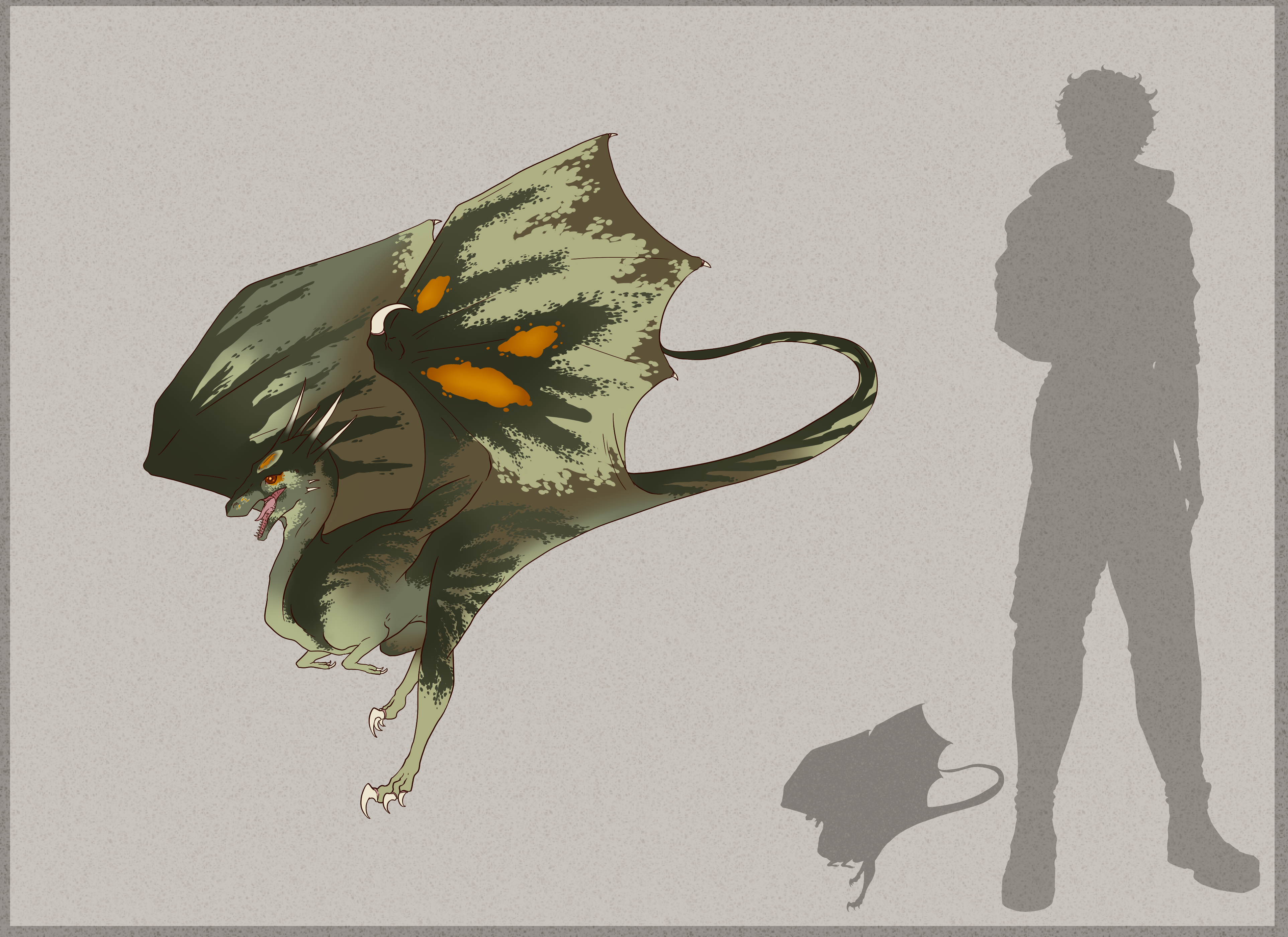Rakefield's Whelp
Basic Information
Anatomy
The Rakefield's Whelp, also known as the Rakefield Whelp or as they're known to many city dwellers the 'Spicy Rat Dragon' is an incredibly small species of dragon with a large head, small forearms, long legs, and a long thin tail. Its wings are relatively small for its body size, adapted for swift take off and agility over power. This species is quite lithe with little body fat. Similar closely related species often have highly reduced forelimbs, suggesting the Rakesfield Whelp represents a transitionary morphology between functional arms and spurs.
Genetics and Reproduction
This species reproduces extremely quickly, breeding throughout the year and are known to be promiscuous, mating with and individuals available. As they often live in large groups, this results in high volumes of offspring that ordinarily would be picked off by predators to control their numbers. Eggs are incubated solely by the body heat of this species, with many individuals in their nests and dens who take turns on one another's nests. Often in urban environments, it is observed that multiple females will lay their eggs in the same nest rather than build their own.
The whelp generally lays between 4 and 9 eggs each that hatch in about 20 days. Hatchlings are fed communally by any adult who enters the nest with food, reaching half their adult size in as little as two weeks. Due to their incredibly high metabolism, they are almost constantly feeding as young.
Ecology and Habitats
Rakefield's Whelps are native to the temperate forests of Asia, having evolved a lifestyle similar to that of many songbirds and with similar predators. They are most at home in crowded locations with a lot of height and many spaces to hide. As such, they have flourished in cities through introduction that first occurred in the 6060s as a method of curbing pigeon population, and their numbers quickly grew out of control.
Dietary Needs and Habits
This species is primarily a scavenger, feasting on all manner of foods discarded by other creatures in its environment such as carrion, fruit scraps left behind by large herbivores, and the eggs of birds and dragons alike. Rarely do they actively hunt, but when they do it is often on large insects and small birds. Misconceptions about their anatomy such as having large claws led to the thought they may have been primarily predators in the past, but further study revealed that these creatures actually use their talons more for defending themselves and for combat amongst themselves.
Additional Information
Uses, Products & Exploitation
The Rakefield's Whelp is not domesticated, however is occasionally kept as a pet due to being rather low maintenance and having a small size well suited for many lifestyles. Most areas require these whelps to be kept on leads or harnesses when outdoors and have strict laws regarding their release or feral animals.
Due to being invasive in so many areas, they are seen as a pest and a detriment to local environments. Surprisingly bold for their size, they can on occasion attack people or their pets such as cats and small dogs when defending their food, which can spread disease. As such, it is not uncommon for traps meant for the whelps to be set on city rooftops, around dumpsters, and in landfills. Pygmy Phoenix-Kites and Domestic Griffins are often used to hunt these creatures for removal.
Genetic Ancestor(s)
Origin/Ancestry
Conservation Status
Least Concern / Invasive
Geographic Distribution



Comments